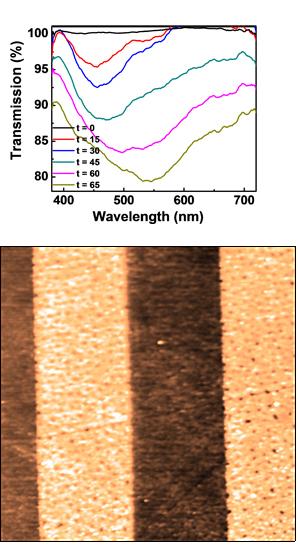
Ferroelectric lithography traditionally involves photo-reduction on polarized ferroelectric surfaces at optical energies above the bandgap of the ferroelectric in reflection geometry. In contrast, our use of broad spectrum white light at energies below the bandgap leads to the conclusion that the Ag reduction proceeds through non-linear effects, specifically, second harmonic generation. Our unique evanescent illumination geometry allows for in situ characterization of metal nanostructures and unprecedented metal layer thicknesses. Highly confined light fields at the crystal surface provide conditions conducive to soliton formation. This is of interest not only at the phenomenological level due to the possibility of plasmon and soliton interactions, but also for fine tuning end-stage optical, electrical or electro-optic applications.
K. Seal, B. J. Rodriguez, I. N. Ivanov, S. V. and Kalinin, “Anomalous Photodeposition of Ag on Ferroelectric Surfaces with Below-Bandgap Excitation,”Advanced Optical Materials (2014). DOI: 10.1002/adom.201300380
For more information

